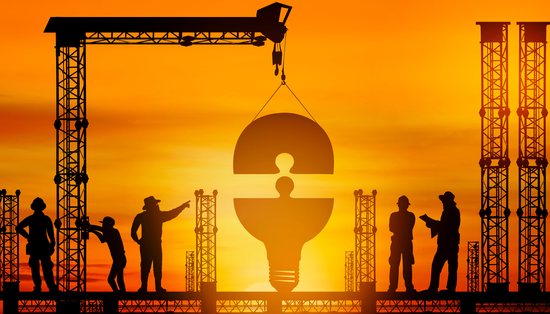
Post-COVID Market Dynamics in the Construction Industry: How Developers Can Stay Ahead of the Curve
The market impact of the pandemic and its aftermath has varied from industry to industry, but few have emerged unchanged. In the world of construction, the good news for developers and owners is that buildings still need to go up or undergo development even amidst the backdrop of major restrictions and lock-downs that marked the height of the crisis. Post-pandemic, construction experts expect continuing growth in the industry, though it could take years to fully reach pre-pandemic levels.
A major factor influencing the construction industry is the ongoing impact that shutdowns have had on the supply chain. In a healthy market, supply and demand are balanced. However federal stimulus boosts tip the scales in favor or demand, while the supply side of the equation continues to grapple with shortages. Anirban Basu, an economist with the Sage Policy Group, believes the incentives given to demand and the restraints put on supply will lead to greater inflation and a serious market impact on the construction industry.
The Road to Recovery
As the post-COVID construction industry navigates the intricate and shifting relationship between supply and demand, it also seeks to evolve by implementing lessons learned.
Construction was deemed an essential service early on in the pandemic. This meant construction workers and projects were mainly uninterrupted by lockdowns and stay-at-home orders. However, it also meant the workforce was quickly plagued by outbreaks of sickness that had a serious impact on productivity.
As a result, what should have been a standout year for new construction due to low interest rates and the scarcity of single-family homes on the market was marked by material shortages, sky-high prices, and unpredictable delays. Construction did not come to a halt, but the challenges had a significant impact on the industry.
Proactive industry players managed to find creative solutions to these problems. With the demand for new commercial and restaurant buildings declining, they put more focus on other projects, such as:
- Warehouse spaces
- Re-construction and expansion of campuses, parks, medical facilities, and other complex projects to meet social distancing guidelines
- More rural and small-town construction as people leave the cities and head to the country and small towns
- New buildings for companies moving to new locations
For owners and developers ready and willing to adapt to post-COVID market dynamics, the momentum will only continue to grow as they adopt new operating procedures and strategies to survive the long haul. To this end, industry leaders are focusing on stabilizing and managing supply chains, implementing new technologies to increase efficiency, off-site and modular construction, tighter cybersecurity measures, aggressive reuse, and refurbishing projects for existing structures.
Developers have also learned the importance of protecting their interests through legal means in the event of delays caused by the ripple effect of COVID-19. Particularly with expert guidance from construction consulting professionals, they are now incorporating clauses that address issues like fluctuations in material costs, work suspensions, timeline delays, and other challenges.
But perhaps the most important change post-pandemic is the way owners and developers are reaffirming and renewing the professional relationships that made them successful in the first place. Shifting market dynamics throw into sharp relief the importance of partnering with a comprehensive construction solutions provider with on-the-ground experience, a focus on client relationships, a solid profile of satisfied partners, and the ability to interface with other important players such as architects, engineers, suppliers, subcontractors, government agencies, general contractors, and attorneys.
Looking Forward
The demand for new builds and renovations of existing structures and complexes is a given: Government investments in transportation, water and sewage, and telecommunications projects will help to drive infrastructure construction projects forward. Commercial and institutional construction will increase due to renovations and retrofits to meet COVID-19 health guidelines. The designs and layouts of buildings are forever changed by the experience of a global health crisis, ensuring a wealth of opportunities for developers and owners.
This work, however, will need to be done within the shifting dynamics of a marketplace still heavily impacted by the pandemic. The construction solution consulting experts at Willis Construction Consulting are uniquely positioned to advise, troubleshoot, and facilitate projects, helping owners and developers reduce risk and maximize return on investment. Specializing in large-scale and nuanced projects from themed construction to sports complexes, Willis combines years of on-the-ground experience with in-depth knowledge of the industry to provide customized solutions to even the most involved construction projects.
Contact the experts at Willis Construction Consulting for innovative and comprehensive solutions to your complex construction challenges.



